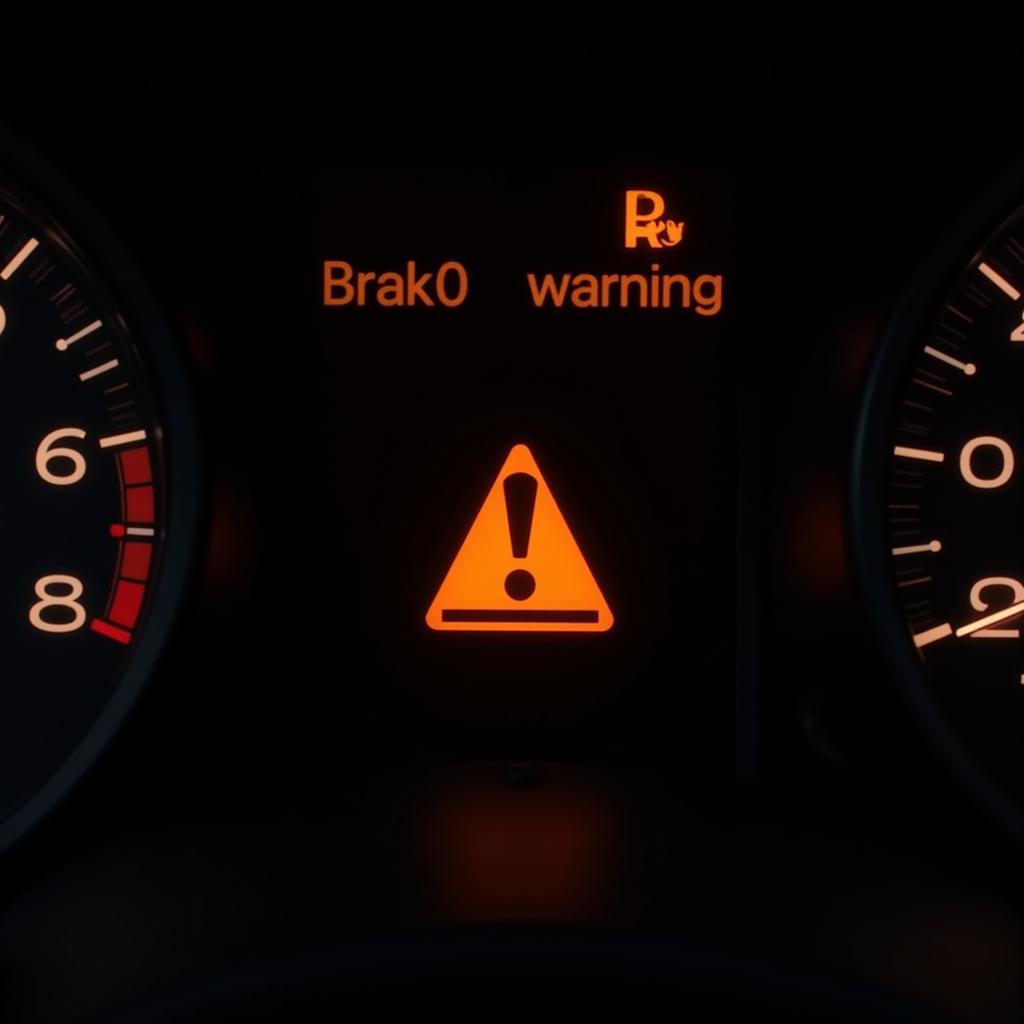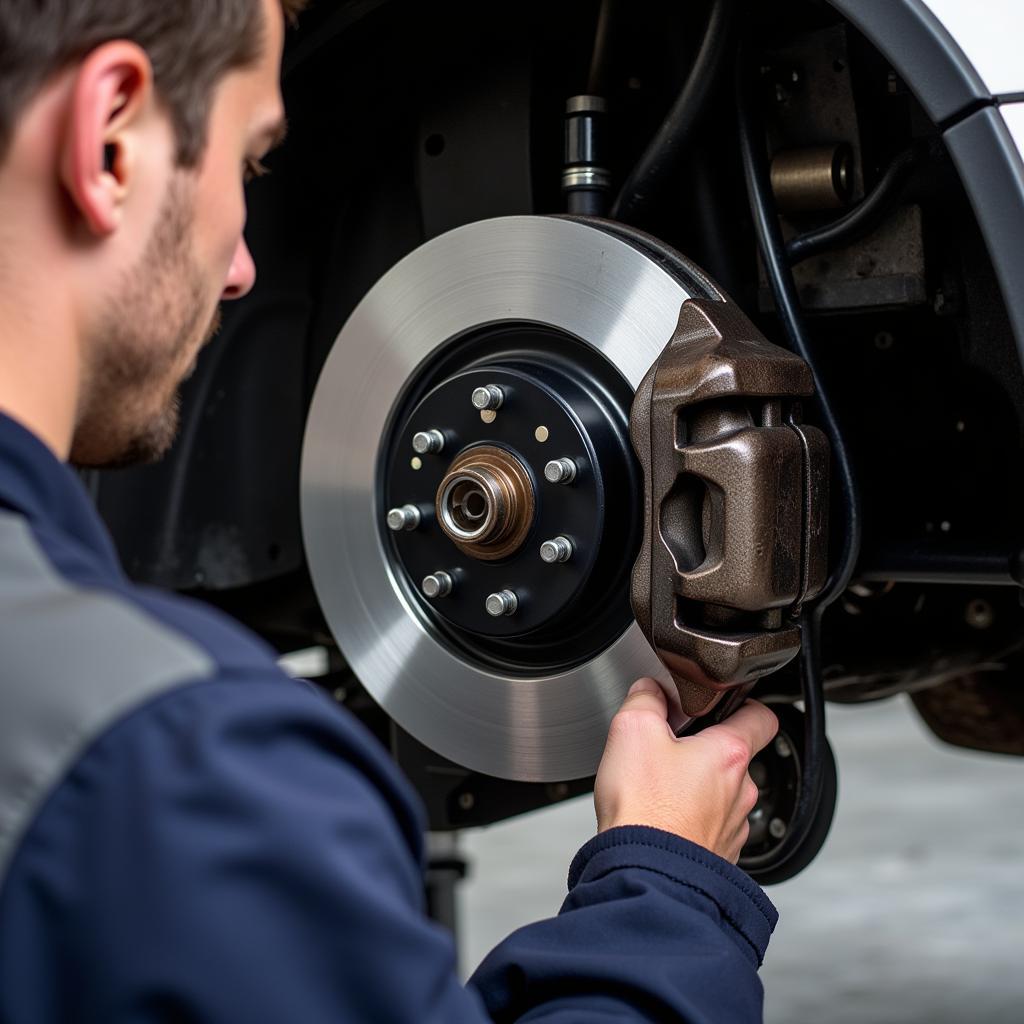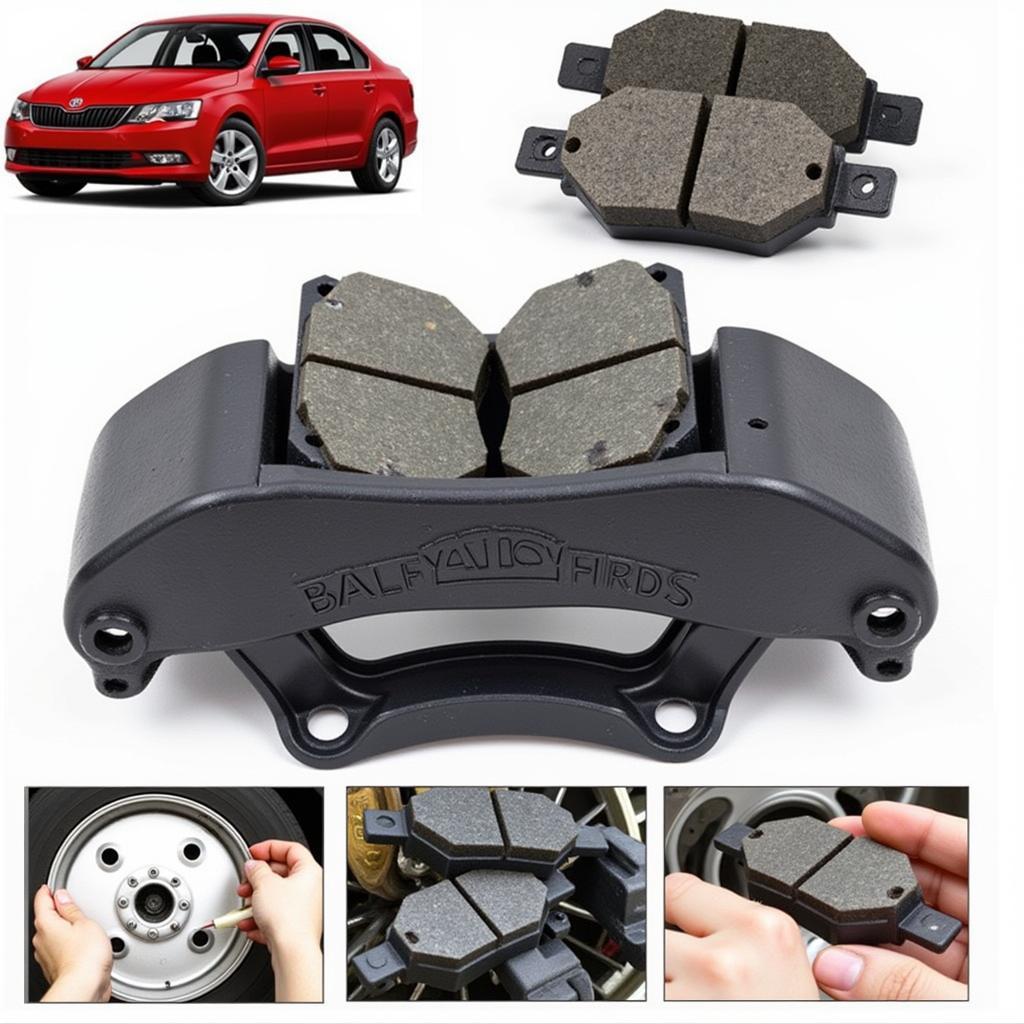That orange brake warning light staring back at you from your dashboard can be unsettling. It’s a signal that something isn’t quite right with your braking system, and understanding what it means is crucial for your safety and the longevity of your vehicle. This article will delve into the common causes of an orange brake warning light, offer troubleshooting tips, and discuss solutions. We’ll cover everything from simple checks you can perform yourself to more complex issues that require professional attention.
As a specialist in automotive electrical engineering with expertise in remote diagnostics, programming, and software installations, I’ve encountered numerous brake light issues and understand the frustration they can cause. This guide is designed to empower you with the knowledge to address this warning light effectively. Learn more about specific brake light problems on certain car models at orange brake warning light.
Common Causes of an Orange Brake Warning Light
Several factors can trigger that amber glow on your dashboard. Let’s explore some of the most frequent culprits:
- Low Brake Fluid: This is the most common cause. Brake fluid is essential for transmitting the force from your foot to the brake pads, enabling your car to stop. A leak or worn brake pads can lead to low fluid levels.
- Parking Brake Engaged: It might seem obvious, but sometimes the simplest explanation is the correct one. Ensure your parking brake is fully disengaged.
- ABS Issue: The Anti-lock Braking System (ABS) prevents your wheels from locking up during hard braking. A malfunctioning ABS module, sensor, or wiring can trigger the orange brake warning light.
- Brake Pad Wear Sensors: Many modern vehicles have sensors in the brake pads that alert you when they’re nearing the end of their lifespan.
- Faulty Brake Light Switch: This switch activates your brake lights when you press the brake pedal. A malfunctioning switch can sometimes trigger the warning light.
 Orange Brake Warning Light on Car Dashboard
Orange Brake Warning Light on Car Dashboard
Troubleshooting the Orange Brake Warning Light
Here’s a step-by-step guide to help you troubleshoot the issue:
- Check the Parking Brake: Make sure it’s fully released.
- Inspect Brake Fluid Level: Locate the brake fluid reservoir under the hood and check the fluid level. If it’s low, add the correct type of brake fluid. However, persistently low fluid indicates a leak which needs immediate professional attention.
- Check Your Brake Lights: Have someone press the brake pedal while you verify that all brake lights are functioning correctly.
- Consult Your Owner’s Manual: Your vehicle’s manual will provide specific information about the brake warning light and any recommended actions.
If you’re experiencing an intermittent orange brake light, especially on certain models like the BMW X5, you might find this resource helpful: intermittent orange brake light warning on 07 x5 e70.
When to Seek Professional Help
While some causes of an orange brake warning light can be easily addressed, others require the expertise of a qualified mechanic. If you’ve checked the basics and the light persists, or if you notice any unusual braking behavior, such as grinding noises, a soft brake pedal, or pulling to one side, it’s time to take your vehicle to a professional. They’ll have the diagnostic tools and expertise to pinpoint the exact cause and perform the necessary repairs. For instance, issues with the instrument cluster on certain truck models, like the 2008 Durastar, can also trigger the orange brake light. You can find more information on this specific issue here: 2008 durastar instrument cluster warning orange brake light.
 Mechanic Inspecting Car Brake System
Mechanic Inspecting Car Brake System
What does an orange brake warning light indicate? It typically signals a problem with your braking system, ranging from low brake fluid to a more complex issue like an ABS malfunction.
“Ignoring a brake warning light is like ignoring a ticking time bomb,” says automotive expert John Smith, ASE Certified Master Technician. “Addressing the issue promptly can prevent further damage and ensure your safety on the road.”
Preventing Future Brake Issues
Regular maintenance is key to preventing future brake problems. Follow your vehicle’s recommended maintenance schedule for brake inspections and fluid changes. This proactive approach can save you money and headaches in the long run. You can also find model-specific information regarding brake warning lights. For example, if you own a Nissan Qashqai, this link might be useful: nissan qashqai orange brake warning light.
 Installing New Brake Pads on Car
Installing New Brake Pads on Car
Conclusion
The orange brake warning light should never be ignored. By understanding the potential causes and taking appropriate action, you can keep your braking system in optimal condition and ensure your safety on the road. Remember, if you’re unsure about anything, it’s always best to consult a qualified mechanic. Don’t hesitate to address this warning light promptly; your safety depends on it. If you are seeing other warning lights, such as an orange triangle, this resource might be helpful: seat ibiza orange triangle warning light. Addressing the orange brake warning light promptly will give you peace of mind and ensure safe driving.
